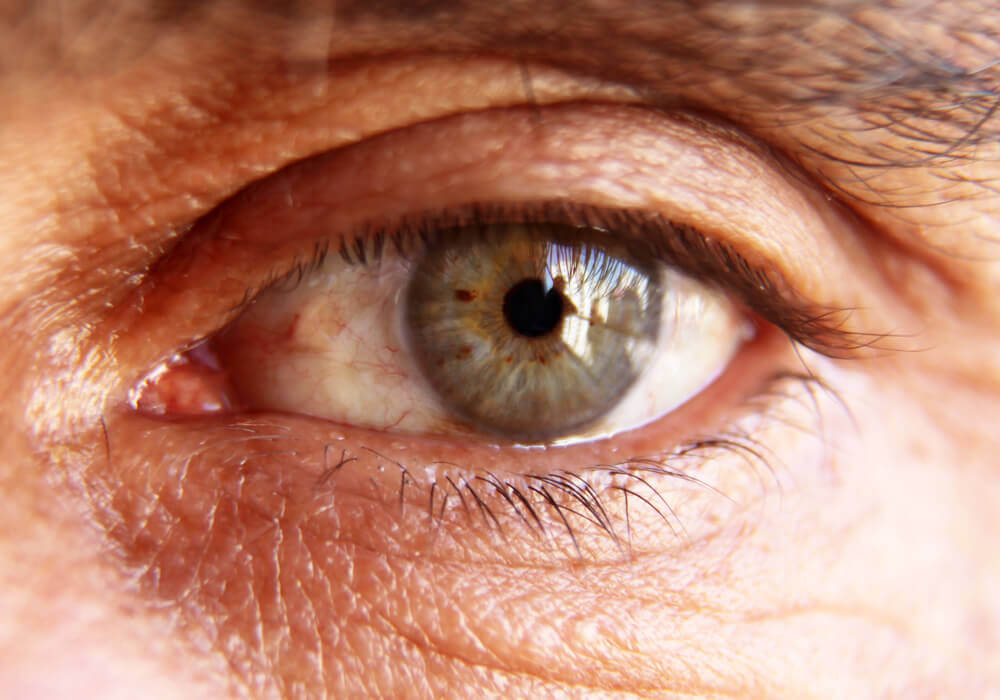Diabetic Eye Disease

Diabetic eye disease refers to a group of eye problems that people with diabetes may face as a complication of diabetes. All can cause severe vision loss or even blindness.
Diabetic eye disease may include:
- Diabetic Retinopathy – damage to the blood vessels in the retina.
- Cataract – a clouding of the eye’s lens. Cataracts develop at an earlier age in people with diabetes.
- Glaucoma – increase in fluid pressure inside the eye that leads to optic nerve damage and loss of vision. A person with diabetes is nearly twice as likely to get glaucoma as other adults.
What is Diabetic Retinopathy?
Diabetic retinopathy is the most common diabetic eye disease and a leading cause of blindness in American adults. It is caused by changes in the blood vessels of the retina.
In some people with diabetic retinopathy, blood vessels may swell and leak fluid. In other people, abnormal new blood vessels grown on the surface of the retina. The retina is the light-sensitive tissue at the back of the eye. A healthy retina is necessary for good vision.
If you have diabetic retinopathy, at first you may not notice changes to your vision. But over time, diabetic retinopathy can get worse and cause vision loss. Diabetic retinopathy usually affects both eyes.
Who is at Risk for Diabetic Retinopathy?
All people with diabetes-both Type 1 and Type 2-are at risk. That’s why everyone with diabetes should get a comprehensive dilated eye exam at least once a year. The longer someone has diabetes, the more likely he or she will get diabetic retinopathy. Between 40 to 45 percent of American diagnosed with diabetes have some stage of diabetic retinopathy. If you have diabetic retinopathy, your doctor can recommend treatment to help prevent its progression.
Does Diabetic Retinopathy have any symptoms?
Often there are no symptoms in the early stages of the disease, nor is there any pain. Don’t wait for symptoms. Be sure to have a comprehensive dilated eye exam at least once a year. Blurred vision may occur when the macula – the part of the retina that provides sharp central vision – swells from leaking fluid. This condition is called macular edema If new blood vessels grow on the surface of the retina, they can bleed into the eye and block vision.
What are the stages of Diabetic Retinopathy?
Diabetic Retinopathy has four stages:
- Mild Nonproliferative Retinopathy – at this earliest stage, microaneurysms occur. They are small areas of balloon-like swelling in the retina’s tiny blood vessels.
- Moderate Nonproliferative Retinopathy – as the disease progresses, some blood vessels that nourish the retina are blocked.
- Severe Nonproliferative Retinopathy – many more blood vessels are blocked, depriving several areas of the retina of their blood supply. These areas of the retina send signals to the body to grow new blood vessels for nourishment.
- Proliferative Retinopathy – at this advanced stage, the signals sent by the retina for nourishment trigger the growth of new blood vessels. This condition is called proliferative retinopathy. These new blood vessels are abnormal and fragile. They grow along the retina and along the surface of the clear, vitreous gel that fills the inside of the eye. By themselves, these blood vessels do not cause symptoms or vision loss. However, they have thin, fragile walls. They leak blood and may result in severe vision loss and even blindness.
Causes and Risk Factors:
Blood vessels damaged from diabetic retinopathy can cause vision loss in two ways:
- Fragile, abnormal blood vessels can develop and leak blood into the center of the eye, blurring vision. This is proliferative retinopathy and is the fourth and most advanced stage of the disease.
- Fluid can leak into the center of the macula, the part of the eye where sharp, straight-ahead vision occurs. The fluid makes the macula swell, blurring vision. This condition is called macular edema. It can occur at any stage of diabetic retinopathy, although it is more likely to occur as the disease progresses. About half of the people with proliferative retinopathy also have macular edema.
What can I do to protect my vision?
If you have diabetes, get a comprehensive dilated eye exam at least once a year, and remember:
- Proliferative retinopathy can develop without symptoms. At this advanced stage, you are at high risk for vision loss.
- Macular edema can develop without symptoms at any of the four stages of diabetic retinopathy.
- Whether or not you have symptoms, early detection and timely treatment can prevent vision loss.
- If you have diabetic retinopathy, you may need an eye exam more often. People with proliferative retinopathy can reduce their risk of blindness by 95 percent with timely treatment and appropriate follow-up care.
The Diabetes Control and Complications Trial (DCCT) showed that better control of blood sugar levels slows the onset and progression of retinopathy. People with diabetes who kept their blood sugar levels as close to normal as possible also had much less kidney and nerve disease. Better control also reduces the need for sight-saving laser surgery.
What are the symptoms of proliferative retinopathy if bleeding occurs?
At first, you will see a few specks of blood, or spots, “floating” in your vision. If spots occur, see your eye care professional as soon as possible. You may need treatment before serious bleeding occurs. Hemorrhages tend to happen more than once, often during sleep.
Sometimes, without treatment, the spots clear, and you will see better. However, bleeding can reoccur and cause severely blurred vision. You need to be examined by your eye care professional at the first sign of blurred vision before more bleeding occurs. If left untreated, proliferative retinopathy can cause severe vision loss and even blindness. Also, the earlier you receive treatment, the more likely treatment will be effective.
How are Diabetic Retinopathy and Macular Edema detected?
Diabetic retinopathy and macular edema are detected during a comprehensive eye exam. Your eye care professional uses a special magnifying lens to examine your retina and optic nerve for signs of damage and other eye problems. Your eye care professional checks your retina for early signs of the disease, including:
- Leaking blood vessels
- Retinal swelling (macular edema)
- Pale, fatty deposits on the retina-signs of leaking blood vessels
- Damaged nerve tissue
- Any changes to the blood vessels
Treatment
How is diabetic retinopathy treated?
During the first three stages of diabetic retinopathy, no treatment is needed, unless you have macular edema. To prevent progression of diabetic retinopathy, people with diabetes should control their levels of blood sugar, blood pressure, and blood cholesterol. Proliferative retinopathy is treated with laser surgery. If the bleeding is severe, you may need a surgical procedure called a vitrectomy. Once you have proliferative retinopathy, you always will be at risk for new bleeding. You may need treatment more than once to protect your sight.

